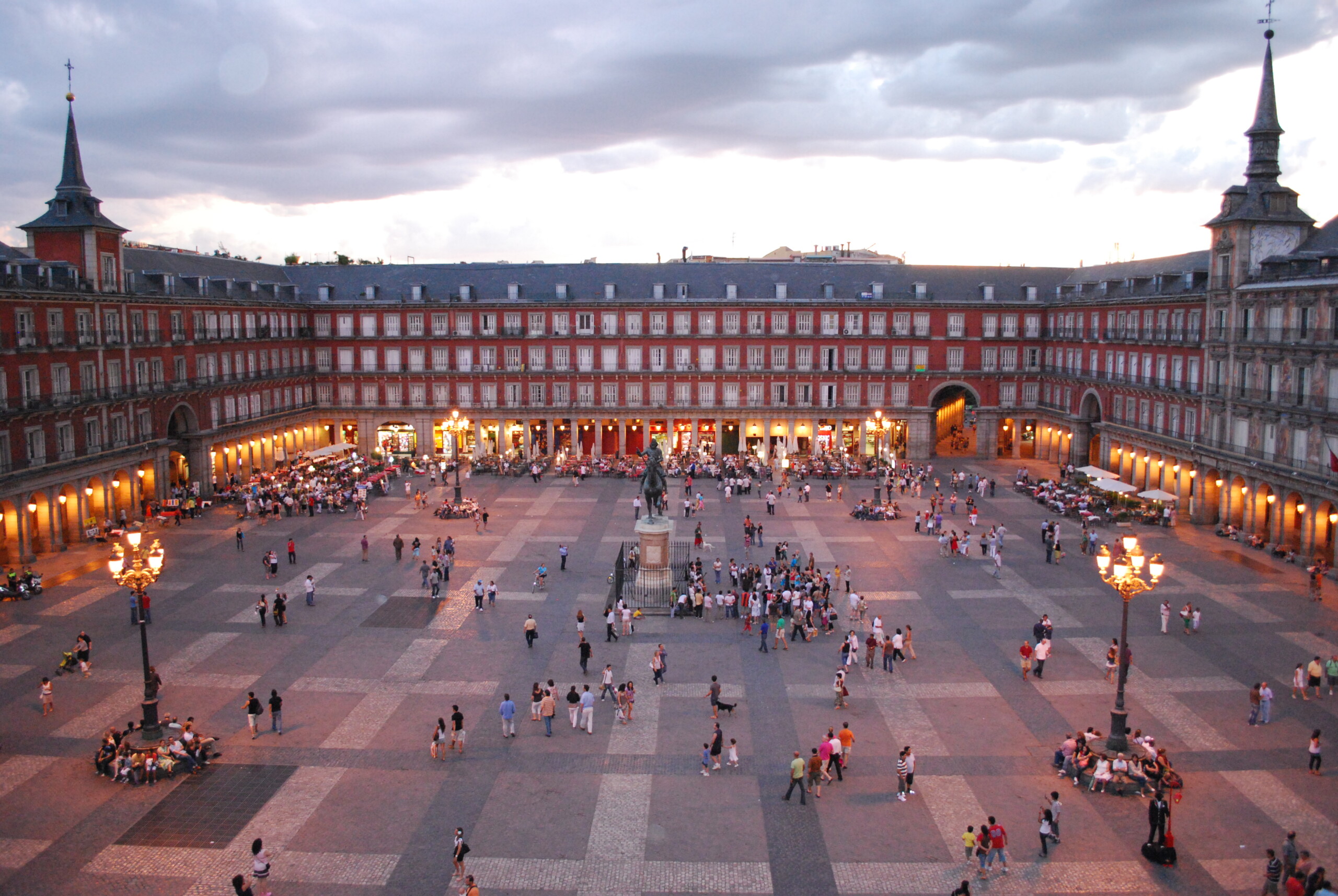The Plaza Mayor is located in the heart of Madrid, a few meters from the Puerta del Sol and the Royal Palace.
It was designed by Juan de Herrera and Juan Gómez de Mora in the Baroque style and is one of the essential visits in Madrid.
Madrid’s Plaza Mayor is 129 meters long by 94 meters wide and is surrounded by arcades and three-story brick buildings.
Throughout the history of Madrid, the Plaza Mayor has been a place for meetings, announcements and celebrations of a civil nature.
In addition, it is loaded with commemorative plaques, historical places and other symbols of great value.
Several architects intervened in the construction of the square, among them Juan de Herrera and Juan Gómez de Mora, who were the true promoters of the project.
With the passage of time and the different fires suffered, the Plaza Mayor has been rebuilt and renovated on several occasions throughout history.
To get to the Plaza Mayor, you can use the different access doors that surround the square, each with a special charm.
In the 15th century, the Plaza Mayor received the name of Plaza del Arrabal, which was replaced by other names such as: Plaza de la Constitución, Plaza Real and Plaza de la República.
The current name has been preserved since the end of the Civil War.
In the Plaza Mayor we can find three places of special interest:
Statue of Felipe III: created in 1616 by Juan de Bolonia and Pietro Tacca, it was a gift from the Duke of Florence to the Spanish king. Until the middle of the 19th century he was in the Casa de Campo.
Casa de la Panadería: it is the most important building and it was the first to begin construction in 1590.
Initially it was the most important bakery in Madrid. The facade is decorated by Carlos Franco.
Arco de Cuchilleros: this arch forms the best known of the nine access gates that the Plaza Mayor has. The name comes from the street with which it communicates, Calle Cuchilleros.


Leave A Comment